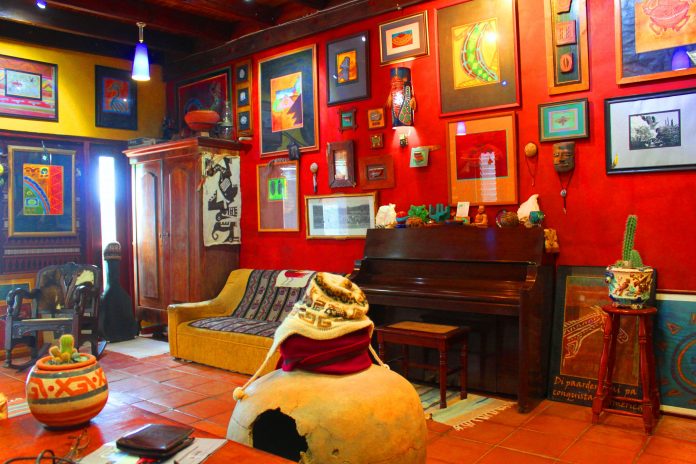Through its weekly episodes, Island Insight offers educational content that sheds light on various aspects of the island’s heritage. By sharing this knowledge, the platform encourages readers to engage with Aruba’s unique cultural landscape and gain a more authentic island state of mind.
During this episode we want to refer to the origins of museums that can be traced back to the cabinets of curiosity, also known as Wunderkammer, which emerged during the Renaissance period. These were private collections that housed a wide variety of objects, including natural specimens, scientific instruments, artwork, and cultural artifacts. These collections were often assembled by scholars, scientists, and wealthy individuals who sought to acquire knowledge about the natural world. Cabinets of curiosity were the precursors to modern museums and represented the early integration of scientific and cultural objects.
The Age of Enlightenment witnessed the establishment of public museums and scientific institutions as part of the broader movement to promote education and intellectual development. Museums played a crucial role in the process of collecting, classifying, and categorizing natural specimens and them served as repositories of scientific specimens, allowing researchers to compare and analyze them to gain insights into the natural world. As scientific knowledge expanded and diversified, specialized museums began to emerge and each museum represented the particular thoughts, interests, and advancements of its era and country. In addition to their function as repositories of scientific knowledge, museums have increasingly embraced an interactive and educational role and are in continuing evolution.
It’s fascinating to see how museums have transformed and adapted to new roles and perspectives over time to extend their social function beyond safeguarding the past and as it sought to promote inspiring and meaningful experiences for visitors.
In the context of Aruba from 1994, a private museum called Etnia Nativa took the initiative to contribute to the island’s cultural tourism while introduce research through compelling exhibits and offers dynamic educational programs, conveying important heritage messages alongside ancestral knowledge and is a place where individuals with diverse interests can find answers to their intellectual, social, and entertainment needs.
The staging and presentation of objects, art, texts, images, and other resources within the museum create a vibrant and immersive experience. As they journey through each space, they encounter different scenarios that invite interaction with the exhibited objects and artworks. Although the duration of the visit may be limited, the impact of the experience is such that it becomes a memorable and unique event for the visitor. By sharing private exhibitions, the museum aims to narrate the authentic history of the island, going beyond the surface level and delving into the depth and richness of its cultural heritage.
The content of the exhibitions motivates to share the ancestral knowledge they have acquired through the museum experience. This act of sharing becomes an integral part of the museum’s mission, as it encourages the transmission of cultural traditions and fosters a deeper understanding and appreciation of the island’s history. By combining engaging presentation techniques, meaningful objects and artworks, and a focus on authentic storytelling, Etnia Nativa creates an environment where visitors can connect with the past, gain insights into the present, and carry the experiences forward as they continue to explore and share their newfound knowledge and appreciation for the island’s heritage.
The unique insular museum breaks away from traditional exhibition models by actively engaging visitors in direct communication even before they enter the building. By doing so, it sets the stage for an immersive, educational and participatory experience right from the start.
It signals to visitors that they are about to embark on a journey of discovery and learning, inviting them to actively participate in the museum experience rather than being passive recipients of information.
The owner, director, and guide of this unique museum, is a multi-talented individual renowned for their skills as an engraver, clay artist, amateur anthropologist and newspapers columnist. Their artistic practice involves a captivating fusion of native imagery and indigenous design, often expressed through simple geometric “glyphs” that poignantly reflects people’s relationship with the environment. By weaving indigenous techniques and spiritual teachings into their work, they aim to honor and preserve cultural traditions.
Etnia Nativa sounds like an incredible cabinet of curiosities for plunged oneself in the rich history and cultural heritage of Aruba. The combination of a beautiful property, guided tours by the owner, and a diverse array of artworks, objects, artifacts, and historical furniture dating back to 1640 creates a captivating experience for visitors. The owner’s firsthand explanations and insights add a personal touch, enriching the experience and fostering a connection with the island’s history.
Moreover, a visit to Etnia Nativa contributes to the conservation efforts of Aruba. By supporting this local initiative, visitors actively participate in the preservation of this fragile travel destination.
To arrange a visit, interested individuals can reach out to Etnia Nativa through email at etnianativa03@gmail.com or via WhatsApp (no calls) at +297 592 2702. This allows for personalized communication and ensures a smooth planning process for a truly memorable and educational experience.




















